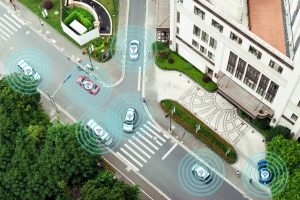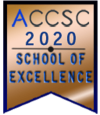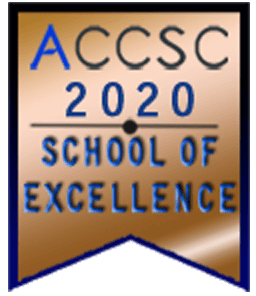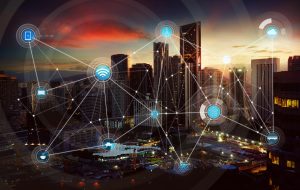
Design technology improves urban planning by making cities more efficient, resilient, and sustainable. Advanced technologies, such as artificial intelligence (AI), augmented reality (AR), and virtual reality (VR) are used to help planners analyze and design cities and townships.
Changes in design technology for urban planning will bring many improvements in the future. Intelligent waste management, automated public transit, traffic management, and smart parking systems will evolve with the technologies. Contact ITI Technical College today for more information.
Efficiency And Sustainability In Design Technology In Urban Planning
The application of artificial intelligence (AR) will continue to be a part of designing and planning the efficiency and sustainability of cities. Some of its uses include:
- Generative AI uses algorithms to create designs that meet the required criteria of sustainability and efficiency, such as optimal use of energy and maximizing green spaces
- Predictive analytics use data to create virtual models of infrastructure and transportation systems throughout the city to see how people use cities and how traffic flows in and out
- Smart security cameras use AI to identify suspicious activity, accidents, injuries, and deaths and notify law enforcement in real-time
These technologies can help planners make better decisions, reduce waste, and improve the quality of life for residents. Creating cleaner and beautiful cities encourages more visitors, helps the economy, and makes life better for residents.
Urban Space Design
Urban design creates the layouts of buildings and the spaces between them to focus on specific design processes and outcomes. As urban areas grow, planners must consider the bigger picture issues of economic, environmental, and social design and values. The buildings and ground plan should be conceived and crafted simultaneously instead of haphazardly over time.
A smart approach allows for developing interconnected blocks, shared amenities, and shelter to improve connectivity and efficiencies on the ground. It may take planning teams months or even years to create an effective and sustainable plan.
|
“Design technology improves urban planning by making cities more efficient, resilient, and sustainable.” |
Intelligent Waste Management
Intelligent waste management control will be designed to monitor waste levels, optimize collection, and enhance the recycling of materials. This will reduce fuel consumption, lower carbon emissions, and minimize landfill use. “Smart” waste management is based on the Internet of Things (IoT) technology. It provides data on waste generation patterns and behavior.
- Cities and waste collectors can optimize their waste operations
- Cities will become more sustainable and eco-friendly
- Planners can make more intelligent business decisions
- Planners can find new ways to address budget cuts
Effective waste management reduces and can eliminate problems associated with excessive garbage, wastewater, and sewage. It will also improve sanitation, reduce unsightly piles of materials, discourage vermin, and a myriad of other issues.
Digital Technology In Urban Planning: Automated Public Transit Systems
 Automated public transit systems refer to integrating self-driving vehicles, such as buses, trains, and other vehicles, into a city’s public transportation network. The vehicles navigate routes and manage passenger and goods flow with minimal or no human intervention. The vehicles will travel on specially-built guideways for efficiency and safety. Potential improvements of these systems will include:
Automated public transit systems refer to integrating self-driving vehicles, such as buses, trains, and other vehicles, into a city’s public transportation network. The vehicles navigate routes and manage passenger and goods flow with minimal or no human intervention. The vehicles will travel on specially-built guideways for efficiency and safety. Potential improvements of these systems will include:
- Increased efficiency
- Better accessibility
- Improve traffic management
Public transit systems will become more automated to allow for adjusting routes and schedules based on real-time data to minimize wait times and maximize efficiency. Automated payment systems will increase the convenience of public transit for users. Autonomous vehicles will be used more frequently as their technologies emerge.
City planners and other officials recognize the benefits of automated public transit systems. These vehicles use sensors and communication systems to reduce travel times, lower operating costs, and complement existing systems to encourage multimodal travel within the city.
Traffic And Smart Parking Management Systems
City planners can use real-time data and advanced technology to improve traffic flow, reduce congestion, and make public transportation more efficient. Micro-mobility hubs will integrate electric bikes, scooters, and car-sharing options that will be accessible through a unified digital platform for all users.
Smart parking systems will use sensors, cameras, and data analytics to provide real-time information on parking space availability. Drivers can use mobile apps to find and reserve available parking spots, reduce the time spent searching for parking, and decrease traffic congestion.
Digital technology in urban planning improves the efficiency of city operations. It makes life better for the residents, attracts visitors, and improves the local economy. The future of digital technology will be determined by the increased use of artificial intelligence.
ITI Technical College offers an excellent Drafting & Design Technology (AOS) Associate in Occupational Studies Degree. Talk to one of our admissions representatives and visit our campus to see how we can help your career.
For more information about graduation rates, the median debt of students who completed the program, and other important information, please visit our website: https://iticollege.edu/disclosures/





